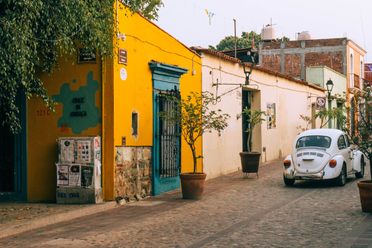Meats & Animal Products
Escamoles
The eggs of "the farty ant" have earned a reputation as the caviar of the desert.
There are plenty of fish in the sea, but when the sea isn’t in reach, there are plenty of ants in the sand. They, too, lay eggs, and, like fish egg caviar, “the caviar of the desert” is very expensive.
Ant pupae and larvae, called escamol, is considered an opulent treat in Mexico. The name derives from the word azcamolli, a portmanteau of the Nahuatl words for ant and stew. This land-locked delicacy, which resembles pine nuts or corn kernels, has a nutty, buttery taste and a cottage cheese–like mouthfeel. Due to their delicate, palatable flavor, escamoles are often prepared simply, fried in butter with onion and chili, and then wrapped in corn tortillas and served in tacos.
This prized egg is produced by the Liometopum apiculatum, or the velvety tree ant. However, the odor of their nests has earned the insect another nickname. Locals refer to them as la hormiga pedorra, “the farty ant.”
Escamoles are collected from the high plains of Central Mexico, where the velvety tree ant tunnels its home among the roots of mezcal and tequila plants. The difficulty involved in acquiring escamoles only adds to their prized reputation. Furthermore, collection season is short. A nest produces eggs about four times, exclusively between February and April.
With proper care, farmers can return to a single nest for up to 20 years, though knowledge of proper collection techniques is thought to be too limited given demand. Escamoleros, the people who track down these tiny eggs in the wild, can sustainably harvest up to 70 percent of the eggs in each nest. But the incentive to collect in greater quantities is strong: one kilogram of escamoles can cost $35 to $100. While many escamoleros carefully scrape away the tops of nests and use sieves to separate ants from their larvae, others are not so careful.
Today, escamol is a trendy item on upscale tasting menus in Mexico City, but the fervor predates the Hispanic era. Before the Spanish landed in present-day Mexico, indigenous people ate escamoles as a source of protein. Aztecs emperors dined on the same desert caviar over 800 years ago, and there are ancient tales of feasts with escamoles on the menu to prove it.
Written By
 rachelrummel
rachelrummel
Sources
- roadsandkingdoms.com/2017/the-caviar-of-the-desert/
- www.fondazioneslowfood.com/en/ark-of-taste-slow-food/escamoles-2/
- www.foragerfoundation.org/blog/2015/3/1/liometopum-apiculatum-escamoles
- eatyourworld.com/destinations/mexico/general_mexico/mexico_city/what_to_eat/escamoles
- www.newyorker.com/magazine/2011/08/15/grub
The Atlas Obscura Podcast is Back!

















